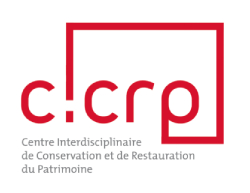Caromb stone
Duration: 2007–2011
CICRP: Philippe Bromblet
Partnership(s): Regional Archaeology Department and Regional Directorate of Cultural Affairs (DRAC), Provence Alpes Côte d’Azur; Vaucluse Archeology Department; Laboratory of Medieval Mediterranean Archaeology; Historic Monuments Research Laboratory (LRMH)
The purpose of this project is to study the use of Caromb stone in construction efforts from antiquity to the 19th century. This consists primarily in demonstrating how and why this stone became widespread over a large territory (Carpentras, Avignon, Aix) and was used as a substitute for other stone materials (Orgon stone), eventually itself giving way to other regional stones from the 19th century onwards (Crillon stone). This research, carried out in collaboration with historians, archaeologists and geologists, aims to compare samples with the provenance indicated in texts describing approximately 15 structures, and to study the principal characteristics and weathering behaviour of Caromb stone.
Publication:
Bernardi P., Bromblet P., Barret R., Vallet J.-M., Mignon J.-M. and Lise Leroux, ‘La production de pierres à Caromb (Vaucluse) : premiers résultats d’une enquête sur une industrie rurale au Moyen Âge’ (2008), Proceedings of the international symposium Pierres du Patrimoine Européen, Economie de la pierre de l’Antiquité à la fin des temps modernes, 18–21 October 2005, Château-Thierry.


